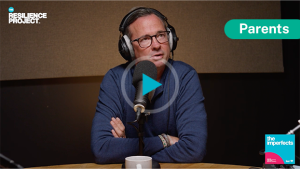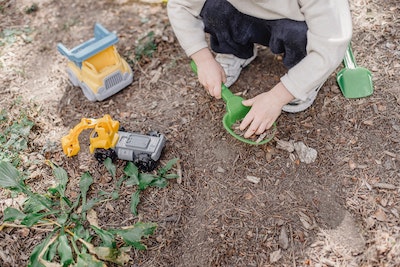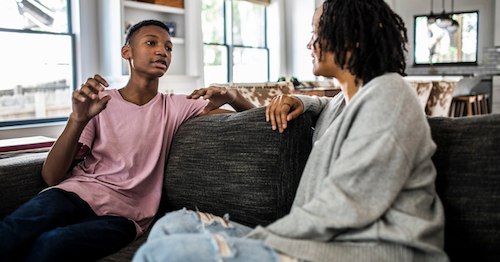It’s pretty safe to say that most parents wish to be mindful in their approach. They hope to be fair and kind, loving and responsive and to raise their children with awareness and empathy. I do believe this is the intent that we all start with.
However! As you know, once that baby arrives it often becomes all about survival and doing whatever works. As that baby becomes a fabulous toddler with a strong will and ideas of its own, our democratic ideas on parenting can often be pushed aside. We can sometimes feel out of control and before we know it, we are no longer parenting in the way we had ideally hoped for.
Parenting Styles Vary
In my many years of working in parent education, I have seen that parenting styles vary greatly. At one end of the spectrum there is Authoritarian Parenting. This style usually consists of very firm boundaries, punishments, rewards and using power over children to get them to behave. This can often result in children feeling controlled, which leads to disconnection and consequently fear can run the relationship. On the other end of the parenting spectrum, we have Permissive Parenting. This can be seen as letting the child call the shots, meeting every need of the child and never letting them get upset. In later years this can play out with the child feeling entitled and the parents often feeling controlled.
There are often issues with both of these styles of parenting. Ideally, we would like to sit somewhere in the middle ground. This is where the concept of Connected Parenting can be very helpful. Over 20 years of raising my own 3 children, I instinctively aimed to parent this way. Along the journey, I made mistakes as I fumbled my way through with good intentions. I did a lot of research and looked for parenting guides and philosophies that might inform and support my intended approach to parenting. Overtime I was able to bring together my experience, research and learnings together in workshops to help other parents achieve their goals of Connected Parenting.
Connection is Key
Connected Parenting is a combination of limits and boundaries along with gentleness, close attachment, love and connection. The core message of Connected Parenting is respectfully listening and tenderly nurturing the full spectrum of our children’s emotions and feelings. Being mindful to not shut them down when they are mad or angry, but instead help them process their big feelings by staying close, keeping calm and connected and modelling empathy as their emotions move through them. It is also about staying connected to ourselves as parents and making sure we take care of our needs, in order to manage our own stresses and worries.
A Child In Balance
In my workshops I like to explain that children can be either in or out of balance. When a child is ‘In Balance’ they are usually chatty, happy with whatever they are doing, usually a pleasure to be around, being kind and gentle with others, lots of eye contact and have increased resilience. When kids are ‘Out of Balance’ we see all the other types of confronting behaviours. They might hit, bite, throw things, yell, be mean to other children or their siblings and often they are very defiant or reactive in nature.
In making sense of why children act out, it helps to understand why children can be ‘Out of Balance’. Dr. Aletha Solter, Swiss American Psychologist explains childhood stressors:
“There are many sources of stress in children’s lives. Illnesses, injuries, and hospitalization are cause for pain, confusion, and anxiety. Quarrelling, separation, or divorce of a child’s parents can be confusing and terrifying, as can the presence of a parent’s new partner or a stepparent. Stress can result from a move to a new home, starting a new school, or the birth of a sibling.
Added to these major life stresses are all the daily separations, accidents, frustrations, disappointments, and anxieties. In a single morning at kindergarten, a child can have a toy grabbed from him by another child, fall from a swing, be served a snack that he dislikes, spill paint on his new shoes, and have to wait for a late parent after all the other children have left. Even happy occasions can be stressful if they are overstimulating. It is not uncommon for young children to burst into tears during their own birthday party, for example. As if this wasn’t enough stress in a young person’s life, many children also carry the burden of very early experiences of stress or trauma.”
Just as many stressors exist for teens as well. From worrying about their appearance, to navigating friendships to unconscious pressures around schooling and the future – the tensions can build easily throughout the day and then unravel at home when a parent asks a simple question or request.
Behind the Tantrums
The day-to-day life of a toddler can often bring about feelings of powerlessness and stress, and all those feelings can accumulate in their little bodies. Toddlers will often hold on to these hurts and when a safe time and place presents itself, the built-up tension explodes all at once. When your little one is angry and raging because you gave them the blue cup instead of the red cup, it can be helpful to remember that rage is their body and the nervous system trying to reset. This doesn’t just apply to toddlers, this pattern of behaviour can also be seen in school age kids, teens and even adults. It’s a common experience for people regardless of age. We often build up stresses and pressures, and when we feel powerless or things don’t go our way, those pent-up feelings can come tumbling out.
When children have a build-up of feelings and are on the brink of a tantrum, you may notice that nothing is right. No matter what you do, it isn’t enough, and they continue to whine or be frustrated.
The idea is to increase connection with our children by being mindful and empathic to their needs. Never isolating them or leaving them alone to cry or tantrum. Always looking behind the surface issue and behaviour problems by addressing the underlying needs and feelings. Recognising that primary causes of behavioural problems can include disconnection, unmet needs, a lack of information, stress and unhealed trauma.
What is also helpful to understand is that tears contain the stress hormone cortisol. When we cry, we are literally releasing stress from our bodies. Studies have found that tears actually lower blood pressure and improve emotional well-being, provided there’s a loved one close by for support.
The amazing natural healing aspect of the human body is to help the child come back into balance. You may have noticed that after the storm has passed and once they have released all those big feelings, they are in a much better mood. It helps if we let our kids’ tantrum without trying to interrupt the process, so they get to the end of their feelings.
Welcome all the Emotions
From a Connected Parenting perspective, when our little ones are upset, the goal is to welcome the emotions instead of shutting them down. The simple yet often challenging art of listening to the hurts, frustrations and pain. When a child feels safe enough to offload all those feelings of frustration, fear, anger and so on, they are able to move past them quickly. The other bonus of staying calm and holding the space for these big feelings is that it teaches our children what empathy looks like. It also creates new awareness and pathways in their brain that says, ‘I can feel these feelings and let them go’.
Children develop emotional intelligence when we teach them that all their feelings are okay. As they grow and develop, understanding that feelings are welcomed and held, they develop skills to speak and process what they are feeling, instead of shutting down or numbing themselves out, or acting out using violence and aggression. We also model what gentle listening looks like and children then learn what it is to listen with compassion and empathy.
In addition to holding space for big feelings to come and go, parents can also help children to process their stress and trauma. Often simple approaches work best. For instance, play and laughter is a great way to support children through this process, whilst at the same time building stronger connections between child and adult.
Recognise your own Childhood
In an ideal world, we meet our children’s big explosions and meltdowns calmly and with empathy. However, it is often easier said than done. When our child rages or tantrums it can trigger our own fight or flight mechanism. This is especially true if we grew up in an environment where there was yelling or violence. It can tap into our own nervous system, reminding us that we can still feel those danger signals going off inside. This can lead to a need to stop the feelings quickly, for both the parent and the child. That is why we move into yelling or wanting to punish our children when they get upset. We are often in our own state of panic. It helps if we can look at our own reactions and work through them, which will then assist us in being able to maintain a calm and balanced connection with our child.
Your Child’s First Teacher is You
It’s always good to remember that our role as parents is to guide and teach our children. We do this in every moment as we go about our lives. Our children learn about the world by the way we interact with it. As we model taking care of ourselves we help them to understand that vulnerability, self care, accepting support and asking for help are all parts of being human.
When it comes to teaching our children about emotional wellbeing, feelings, empathy, mindfulness, gratitude, resilience and compassion – then modelling it at any moment including when they are upset, is the best education possible.
If we can remember to look behind the behaviour and ask ourselves “what is my child needing right now” and prioritise connection then we are working towards creating trust, respect and harmony in our homes. If we practise the art of listening and playful connection, as well as holding boundaries and gentle limits we take steps towards parenting democratically, not from a place of control but one that focuses on guiding our children to be the best versions of themselves.
Listen by Patty Wipfler ( book ) https://www.amazon.com/Listen-Simple-Everyday-Parenting-Challenges/dp/0997459301
The Aware Parenting Podcast https://podcasts.apple.com/au/podcast/the-aware-parenting-podcast/id1455772681
The Whole Brain Child by Dan Siegel https://www.drdansiegel.com/books/the_whole_brain_child/
How to Raise Emotionally Intelligent Children https://www.ted.com/talks/lael_stone_how_to_raise_emotionally_intelligent_children





